Pictures from Patrol
Elmont, west River, and Sunshine (2014-2018)
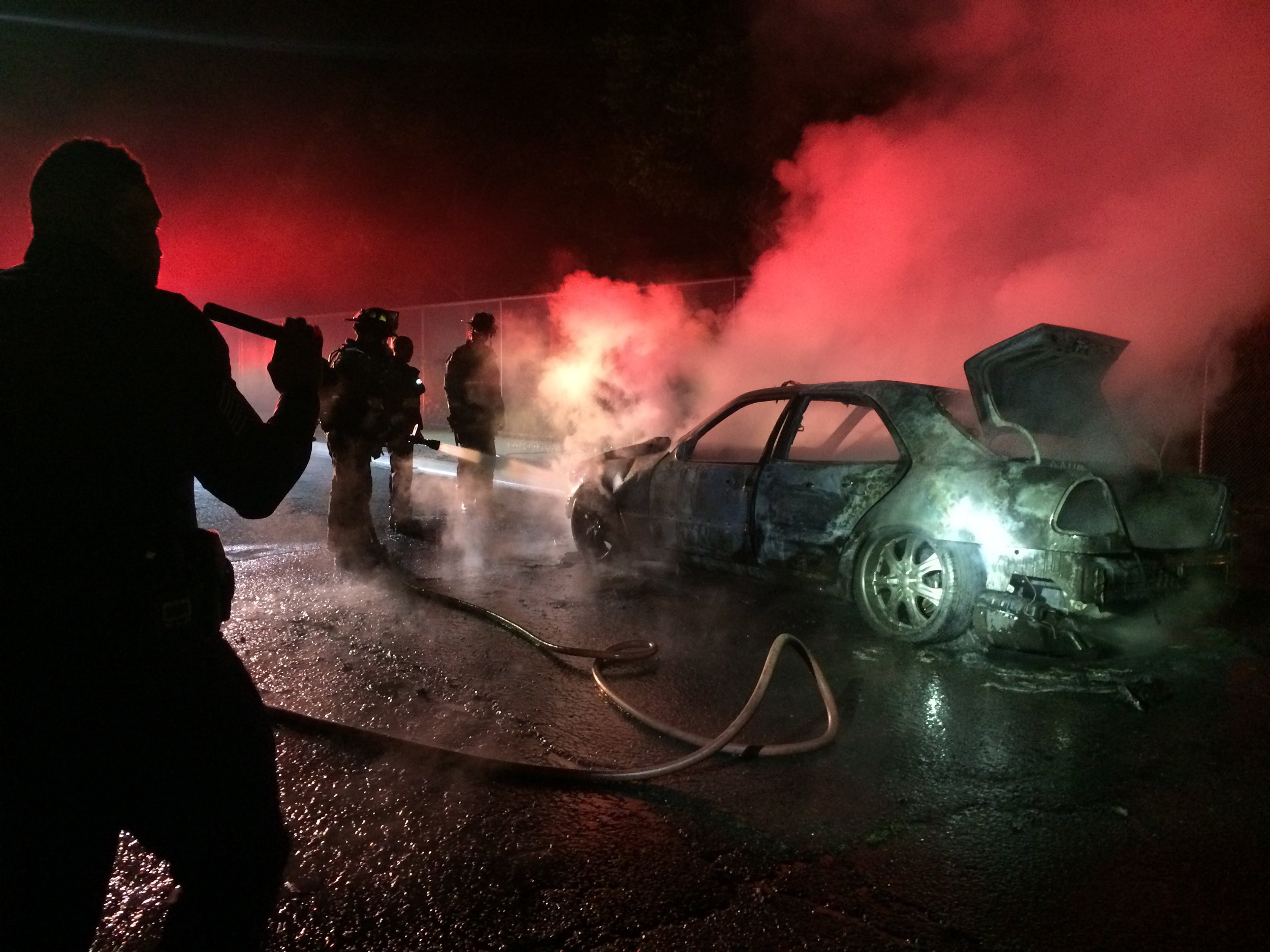
Shots and Smoke
Violence on patrol is real. But police very rarely encounter it directly. Usually, they respond to it after the fact. During one graveyard shift, WPD officers responded to a report of shots fired and recovered multiple shell casings and a side view mirror which had been struck by gunfire. A short while later, officers were alerted of a burning vehicle which the fire department was addressing. Upon arrival, officers saw that it was missing one of its side view mirrors and found multiple bullet holes in its side panel, linking it back to the earlier shots fired call.
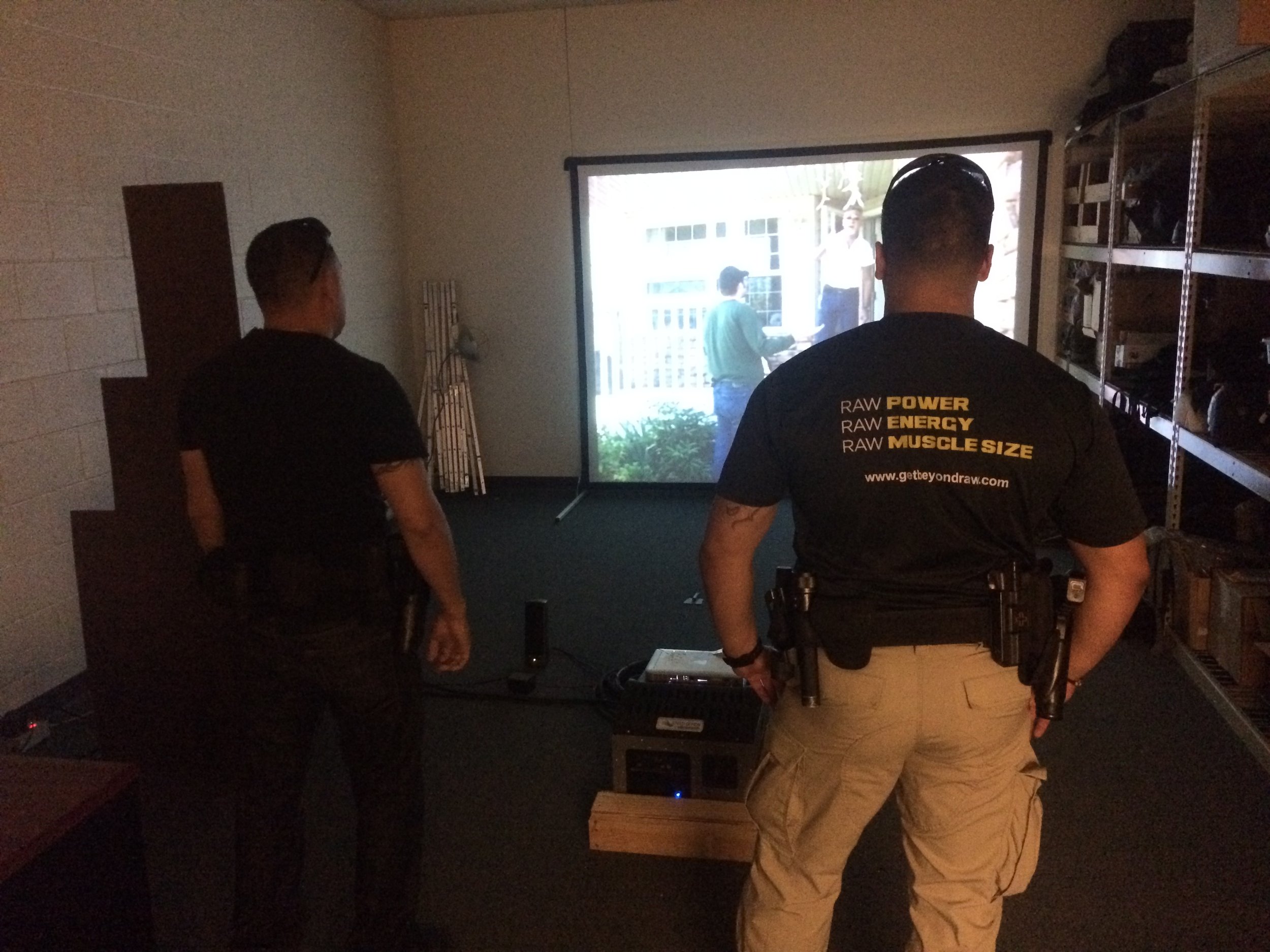
Shoot/Don't Shoot
Modern academy training often involves digital simulation trainings, such as this video-based scenario system in the SPD. During video scenarios, an instructor manipulates the outcome of a given scenario, forcing recruits to adapt to evolving situations. Beyond practicing making split-second decisions about the use of lethal violence, this training also requires offices to rehearse how they would justify their decisions such that they accord with departmental policy and law.
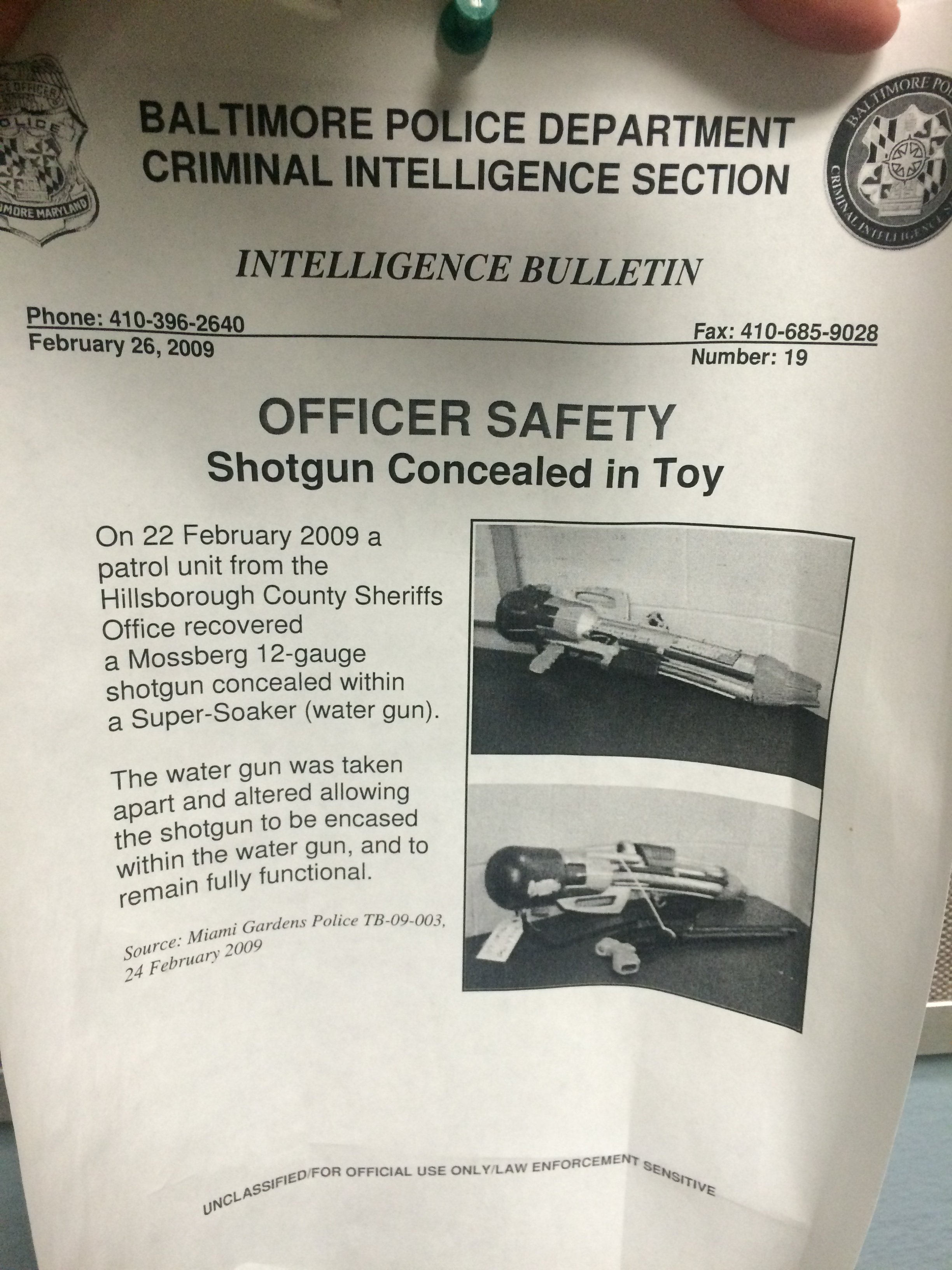
The Threat Network
Leveraging a vast “threat network” of local, state, and federal agencies, departments receive and amplify information signals about an infinite array of weapons, criminal suspects, and other threats. This officer safety bulletin, observed in 2015, was originally produced by the Baltimore Police Department in 2009 based on the report of a shotgun hidden in a water gun in Florida. These signals, transmitted between departments across the country, expand the range of threats which, no matter how rare, are understood as a threat to officers everywhere.
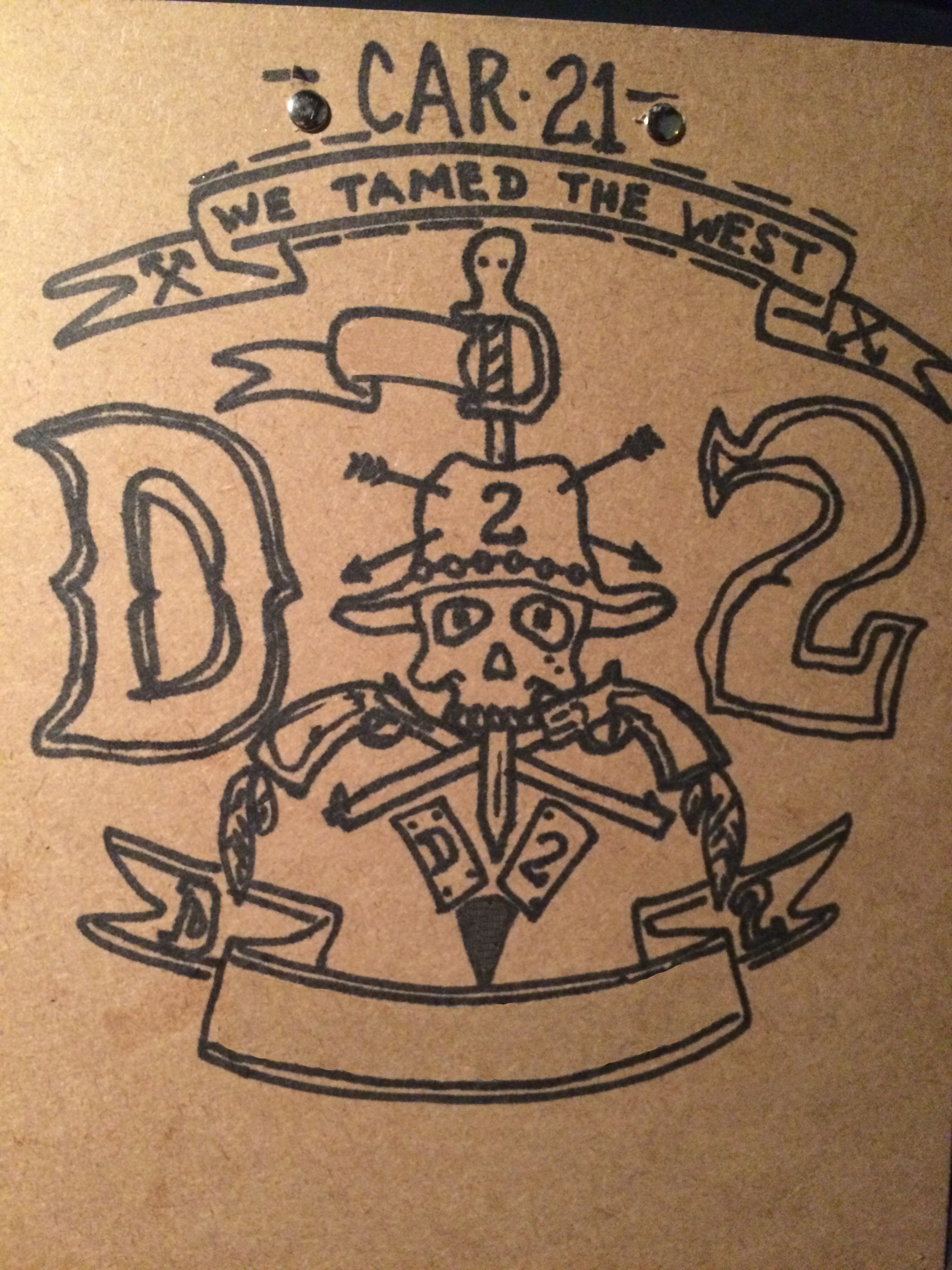
"WE TAMED THE WEST"
This drawing was observed on the back of a clipboard found in an EPD patrol car assigned to District 2, located on the western side of Elmont. The saber, revolvers, and arrows, as well as explicit reference to “the west,” invoke the frontier violently seized by white settlers. It also draws an equivalence between the violent history of Manifest Destiny and EPD officers’ efforts to “tame” the dangerous territory and people of District 2.

"It's for my safety."
A wide range of officer behaviors are understood as necessary to ensure officer safety. From how they stand to where they park their cars, officer behavior is deeply shaped by the possibility of violence. In this image, 3 men are handcuffed and sat on the curb while officers, with no evidence of any crime having occurred, searched a vehicle in which two of the men had been sitting. The third man was not in the car but was handcuffed anyways because he was standing nearby. Such handcuffing is routine and, like many other officer behaviors, is justified as necessary to ensure officer survival.
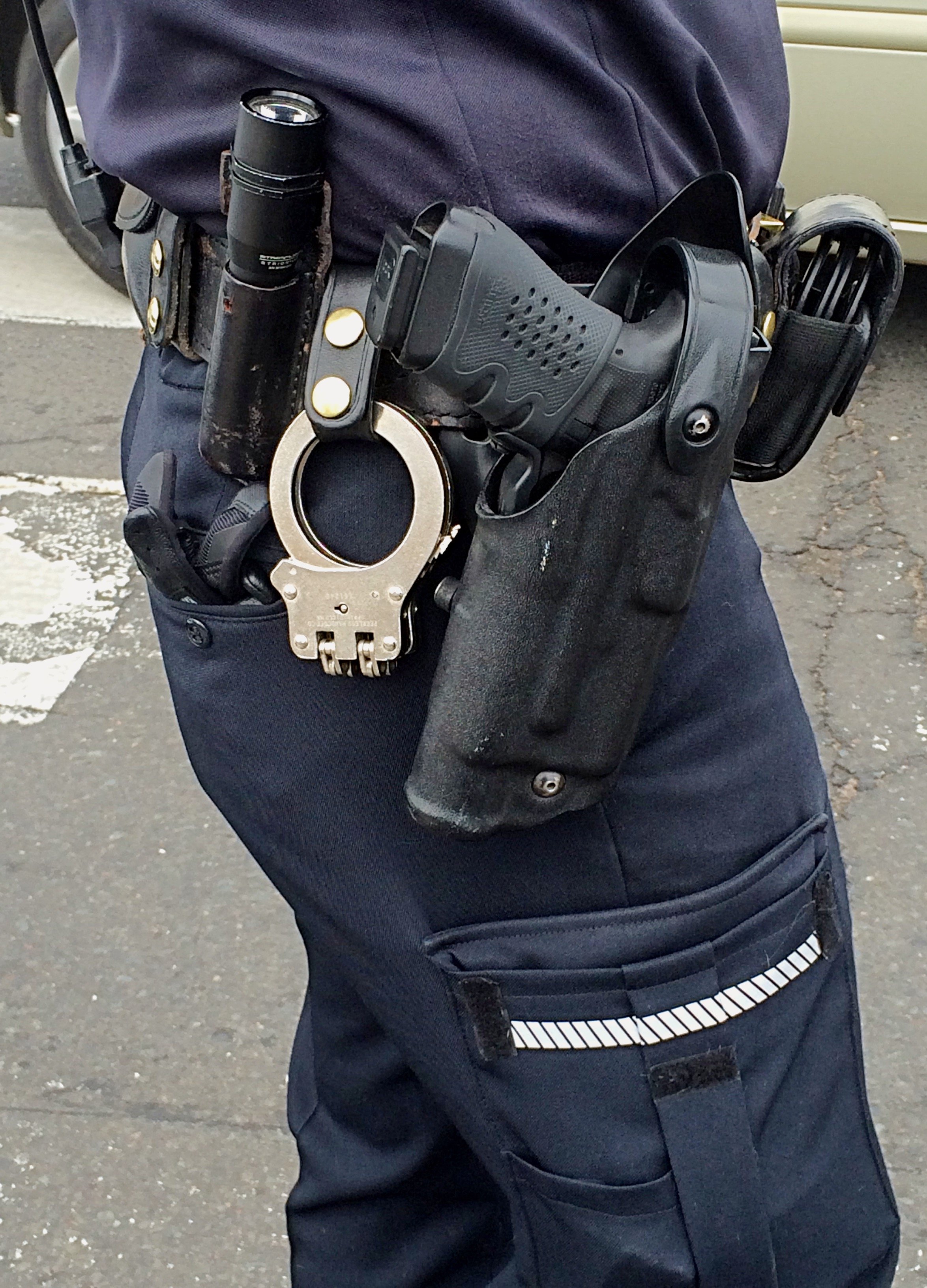
Duty Belt
Between their firearm, additional magazines of ammunition, multiple pairs of steel handcuffs, one or two flashlights, a radio, OC spray, TASER, expandable baton, tourniquet, and more, officers carry 20 to 30 pounds on their waist. Few of these tools are useful in the context of the many non-enforcement (and overwhelmingly non-violent) situations that arise on patrol.
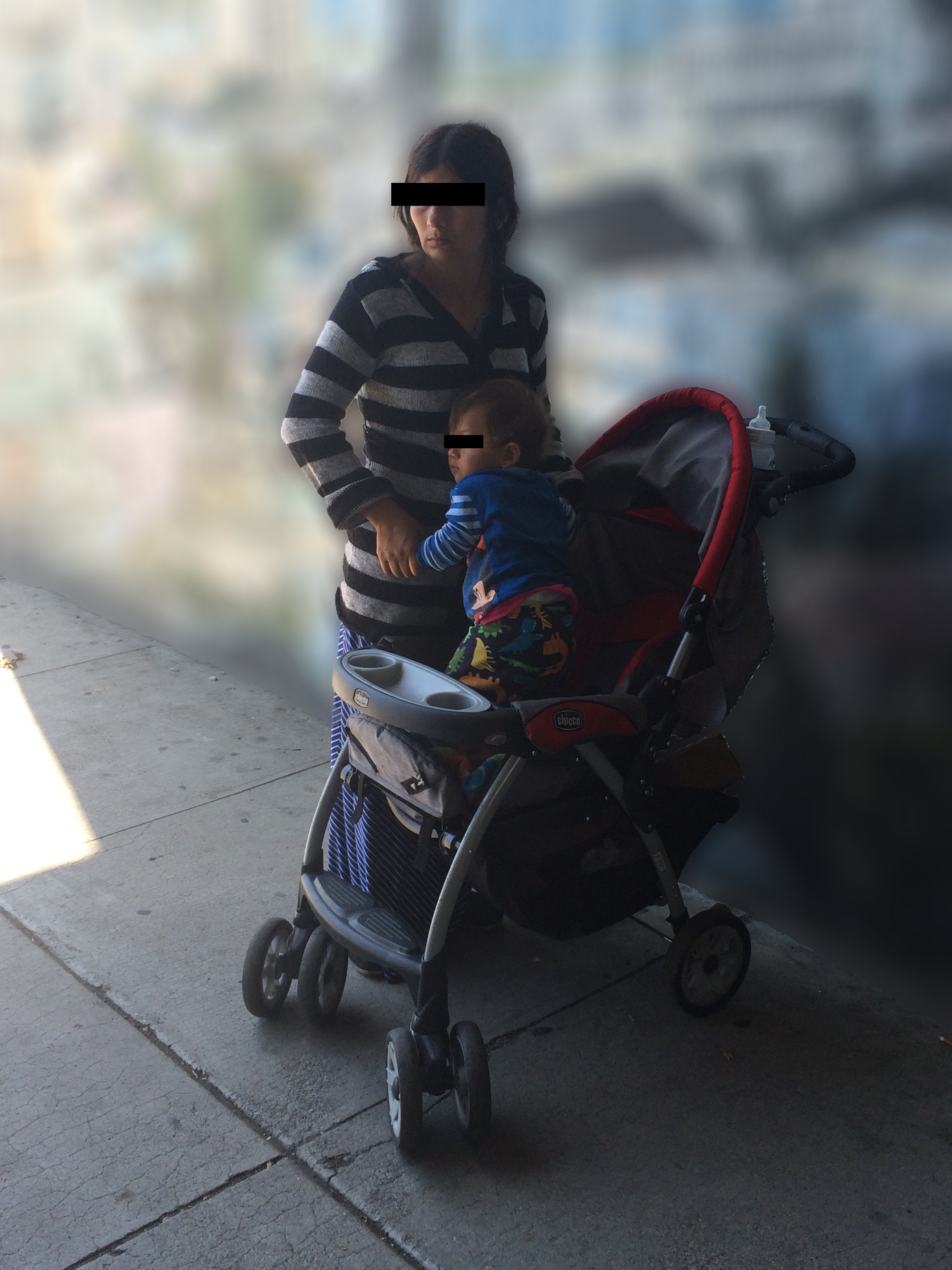
Mother and Daughter
Though the possibility of physical harm is the most emphasized component of policing, violence is rare. More commonly, officers deal with low-level issues such as drug abuse, homelessness, or panhandling. This mother was stopped by WPD officers for panhandling near the exit ramp of a highway with her child in a stroller. Because she had been warned by another agency for similar activity in the past, WPD officers chose to remove the child from the mother’s custody and hand her over to West River child services.